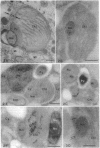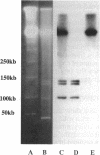Abstract
Chlorarachniophytes are amoeboid algae with unusual chloroplasts. Instead of the usual two membranes that surround the chloroplasts of plants, green algae, and red algae, the chloroplasts of chlorarachniophytes have four bounding membranes. The extra membranes may reflect an unusual origin of chlorarachniophyte chloroplasts. Rather than inheriting the organelle directly from their ancestors, chlorarachniophytes may have adopted the chloroplast of an algal cell ingested as prey. Parts of the algal cell are postulated to remain within the amoeba as a reduced eukaryotic endosymbiont [Hibberd, D. J. & Norris, R. E. (1984) J. Phycol. 20, 310-330]. A small nucleus-like structure, proposed to be a vestige of the endosymbiont's nucleus, is located in a space between the second and third chloroplast membranes. We cloned and sequenced nuclear-type rRNA genes from chlorarachniophytes and found two highly divergent genes. In situ hybridization shows that one gene is expressed by the amoebal (host) nucleus and the other is expressed by the putative endosymbiont nucleus, suggesting that the latter is indeed a foreign genome. Transcripts from the endosymbiont gene accumulate in the small cytoplasmic compartment between the second and third chloroplast membranes, which we believe to be the remnant cytoplasm of the endosymbiont. Using the endosymbiont gene as a probe, we identified three small chromosomes belonging to the endosymbiont nucleus. This knowledge should allow a detailed molecular analysis of the role of the endosymbiont's genome and cytoplasm in the partnership.
Full text
PDF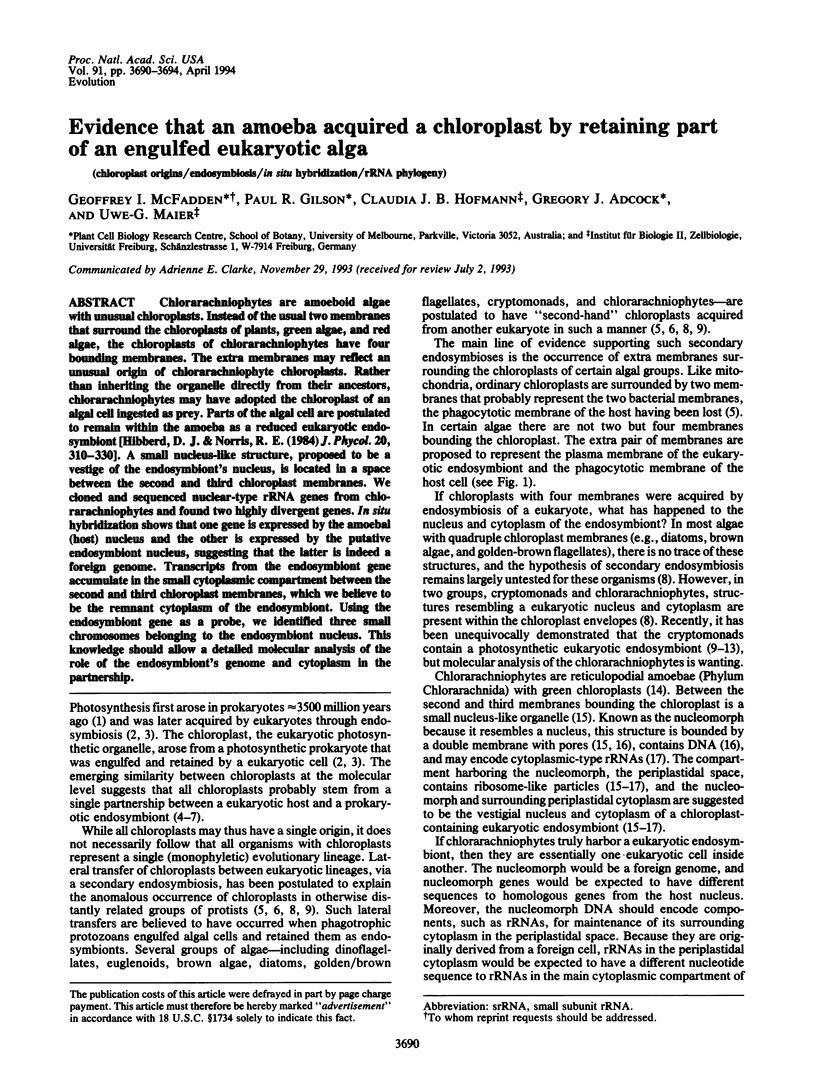
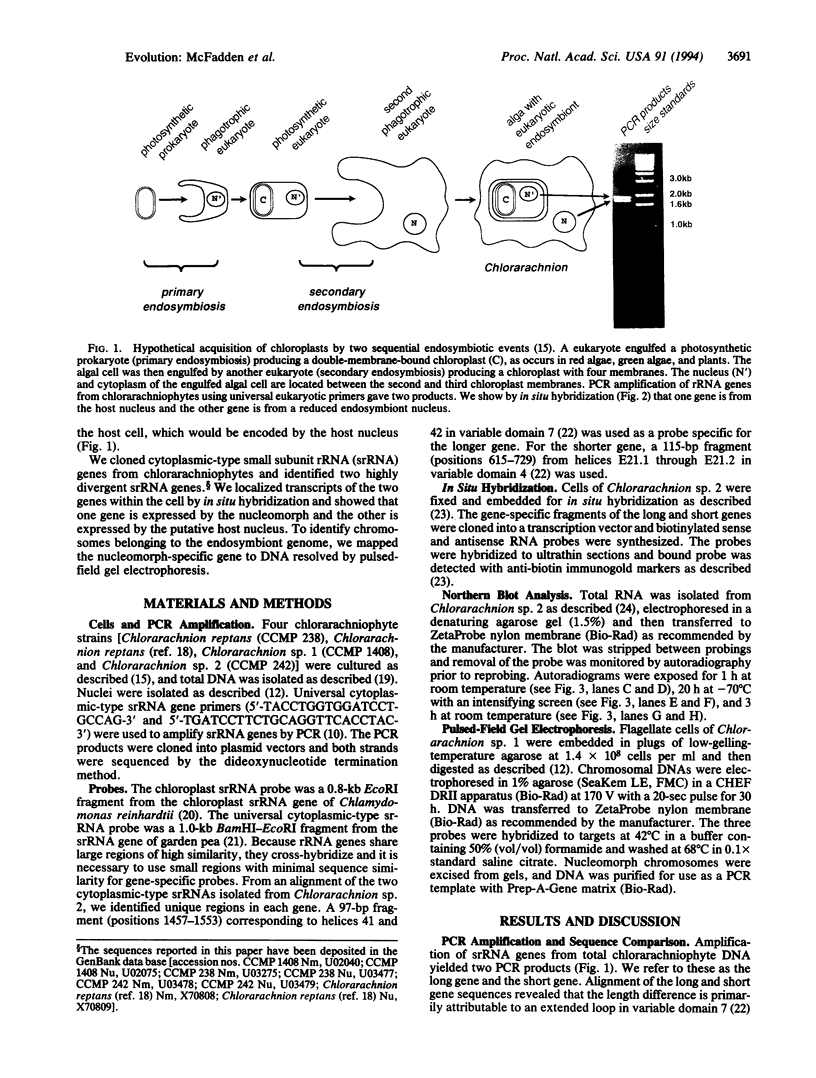
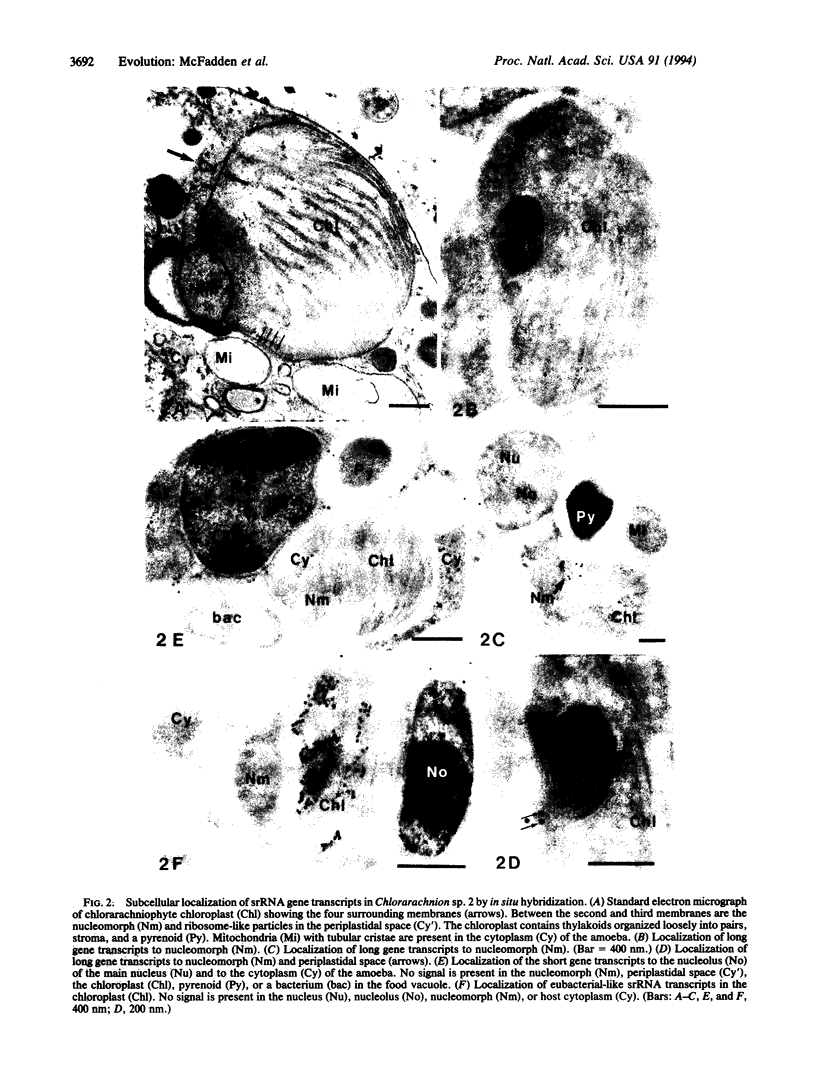
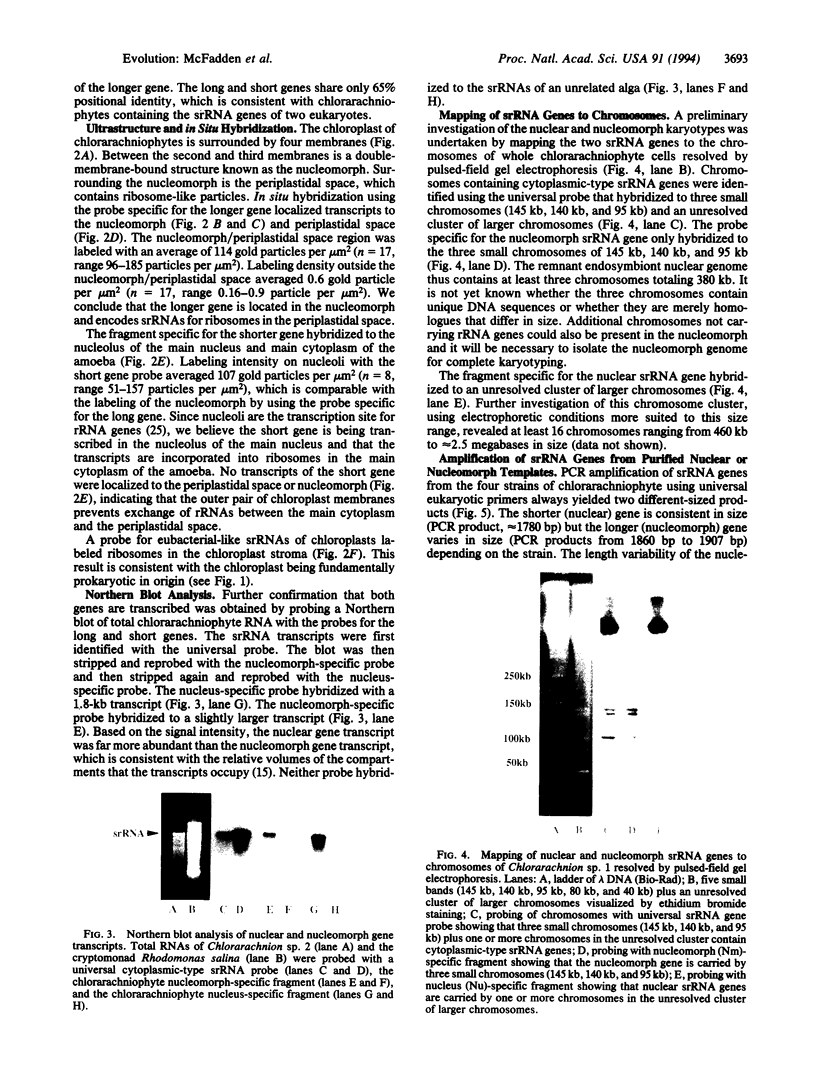
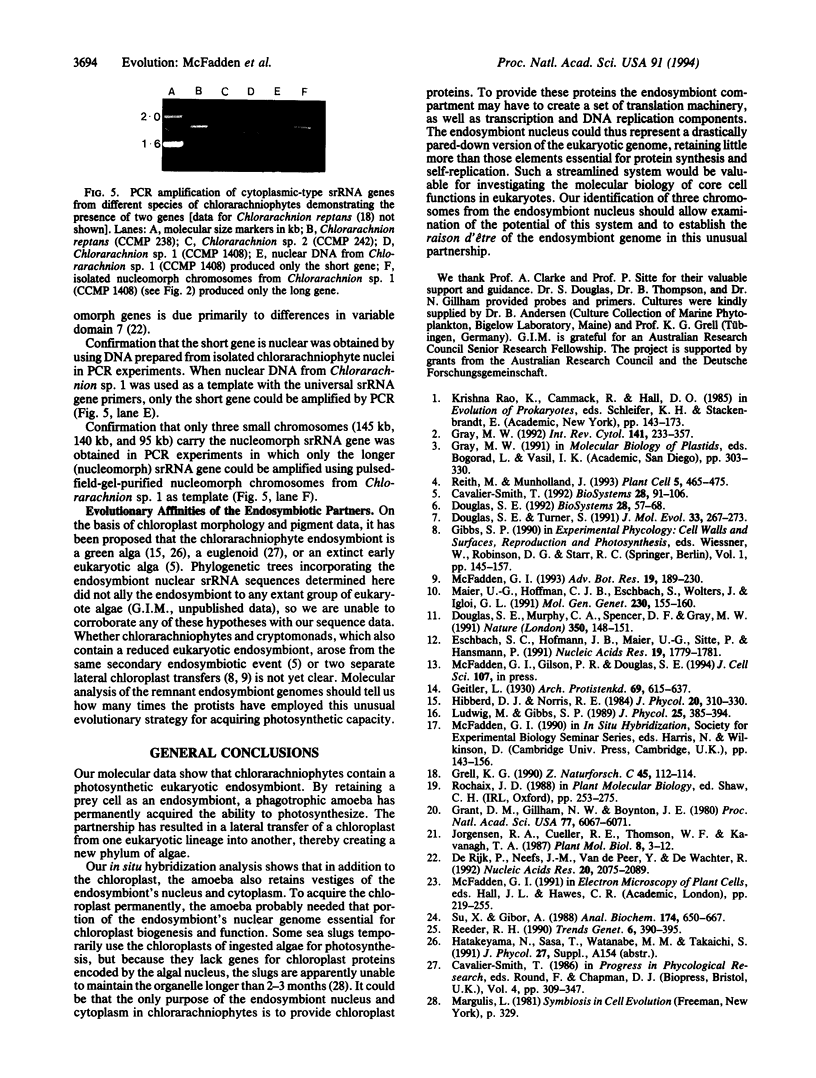
Images in this article
Selected References
These references are in PubMed. This may not be the complete list of references from this article.
- Cavalier-Smith T. The number of symbiotic origins of organelles. Biosystems. 1992;28(1-3):91–108. doi: 10.1016/0303-2647(92)90011-m. [DOI] [PubMed] [Google Scholar]
- De Rijk P., Neefs J. M., Van de Peer Y., De Wachter R. Compilation of small ribosomal subunit RNA sequences. Nucleic Acids Res. 1992 May 11;20 (Suppl):2075–2089. doi: 10.1093/nar/20.suppl.2075. [DOI] [PMC free article] [PubMed] [Google Scholar]
- Douglas S. E. Eukaryote-eukaryote endosymbioses: insights from studies of a cryptomonad alga. Biosystems. 1992;28(1-3):57–68. doi: 10.1016/0303-2647(92)90008-m. [DOI] [PubMed] [Google Scholar]
- Douglas S. E., Murphy C. A., Spencer D. F., Gray M. W. Cryptomonad algae are evolutionary chimaeras of two phylogenetically distinct unicellular eukaryotes. Nature. 1991 Mar 14;350(6314):148–151. doi: 10.1038/350148a0. [DOI] [PubMed] [Google Scholar]
- Douglas S. E., Turner S. Molecular evidence for the origin of plastids from a cyanobacterium-like ancestor. J Mol Evol. 1991 Sep;33(3):267–273. doi: 10.1007/BF02100678. [DOI] [PubMed] [Google Scholar]
- Eschbach S., Hofmann C. J., Maier U. G., Sitte P., Hansmann P. A eukaryotic genome of 660 kb: electrophoretic karyotype of nucleomorph and cell nucleus of the cryptomonad alga, Pyrenomonas salina. Nucleic Acids Res. 1991 Apr 25;19(8):1779–1781. doi: 10.1093/nar/19.8.1779. [DOI] [PMC free article] [PubMed] [Google Scholar]
- Grant D. M., Gillham N. W., Boynton J. E. Inheritance of chloroplast DNA in Chlamydomonas reinhardtii. Proc Natl Acad Sci U S A. 1980 Oct;77(10):6067–6071. doi: 10.1073/pnas.77.10.6067. [DOI] [PMC free article] [PubMed] [Google Scholar]
- Gray M. W. The endosymbiont hypothesis revisited. Int Rev Cytol. 1992;141:233–357. doi: 10.1016/s0074-7696(08)62068-9. [DOI] [PubMed] [Google Scholar]
- Maier U. G., Hofmann C. J., Eschbach S., Wolters J., Igloi G. L. Demonstration of nucleomorph-encoded eukaryotic small subunit ribosomal RNA in cryptomonads. Mol Gen Genet. 1991 Nov;230(1-2):155–160. doi: 10.1007/BF00290663. [DOI] [PubMed] [Google Scholar]
- Reeder R. H. rRNA synthesis in the nucleolus. Trends Genet. 1990 Dec;6(12):390–395. doi: 10.1016/0168-9525(90)90298-k. [DOI] [PubMed] [Google Scholar]
- Reith M., Munholland J. A High-Resolution Gene Map of the Chloroplast Genome of the Red Alga Porphyra purpurea. Plant Cell. 1993 Apr;5(4):465–475. doi: 10.1105/tpc.5.4.465. [DOI] [PMC free article] [PubMed] [Google Scholar]
- Su X., Gibor A. A method for RNA isolation from marine macro-algae. Anal Biochem. 1988 Nov 1;174(2):650–657. doi: 10.1016/0003-2697(88)90068-1. [DOI] [PubMed] [Google Scholar]




